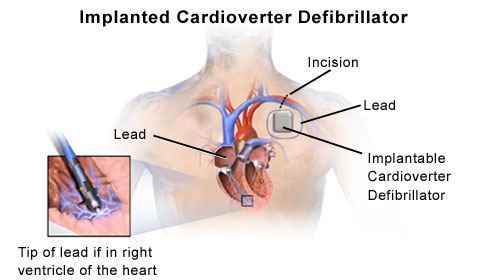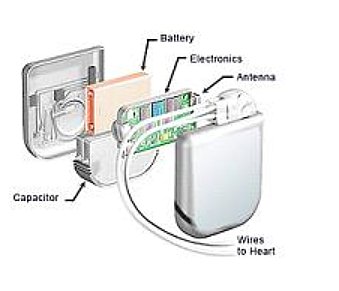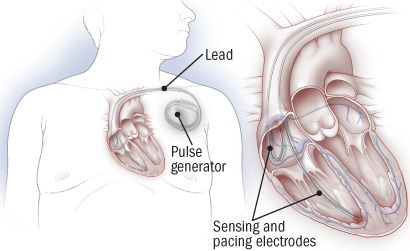Categories
An Implantable Cardioverter Defibrillator. Its Benefits and Risks

ICD or an implantable cardioverter defibrillator is a special electronic device that is installed inside the patient’s chest for preventing sudden death from cardiac arrest that occurs because of tachycardia. The very first devices of this type appeared in the 1970s, and the first implantation took place in 1980. At that time ICDs had a single therapy option – defibrillation, and the generator was placed in the abdomen.
Today an implantable defibrillator has several options and can monitor the heart rhythm. When it is normal, the device is inactive. However, when it develops a life threatening condition like tachycardia, the device delivers one or several electrical shocks to the heart in order to terminate the abnormal rhythms, thus returning the heart rhythm to the norm.
When Is ICD Used?
Specialists state that patients with heart failure or muscle damage are at a risk of having a fast heart rhythm, which is a very serious condition. Implantable cardioverter defibrillators are recommended to those patients, who experience some problems, even if they haven’t yet had abnormal heart rhythms.
It would be wrong to state that such devices can prevent heart attacks, but they are able to treat abnormal rhythms that might be associated with heart attacks. Patients with implanted devices can die as well, but the causes of the death will be other than rhythm problems.
To the list of patients who really need an ICD belong those, who:
- have hypertrophic cardiomyopathy
- had an episode of ventricular fibrillation
- had a history of heart attack
- have an increased risk for sudden cardiac death or cardiac arrest
- had a history of sudden cardiac arrest
- dad one or several episodes of ventricular tachycardia

A battery-powered device is implanted in a pouch under one’s skin of the abdomen or chest. In most cases it is implanted below the collarbone. It is not big in size, in most cases it is like a pocket watch. Leads/wires run from the device to the positions inside the heart /on the surface, they can be installed through blood vessels, which helps to eliminate the need for open-chest surgery.
If you have an implanted cardioverter defibrillator, you are to avoid a few things:
- The electromagnetic field that is near an automobile ignition system.
- Powerful magnets like those contained within the cases of stereo speakers or in a junkyard to lift discarded automobiles.
- Weak magnets that are in telephone receivers or those used to hold notes on a refrigerator.
- Powerful electromagnetic fields that are generated by the equipment, which is used for magnetic resonance imaging.
How Does It Work?
An implanted defibrillator works monitoring the heart rhythms through special electrodes. If there is a dangerous change, it delivers one of the following treatments:
- defibrillation: a single or several large electric shocks for restoring the normal heart rhythm
- cardioversion: one or several small electric shocks for restoring the normal heart rhythm
- pacing: a number of low-voltage paced beats at a fast rate for restoring the normal heart rhythm

Implantable Cardioverter Defibrillator Cost
About ten years ago the cost for implanting such electronic devices was $30,000-40,000. If ICDs were implanted only in 30,000 patients yearly, the budget was nearly $1 billion.
As for now the treatment with an implantable cardioverter defibrillator is even more expensive. The implantation procedure will cost $50,000-60,000. However, specialists call it a cost-effective and life-saving procedure, as every year it saves nearly 10,000 lives.



